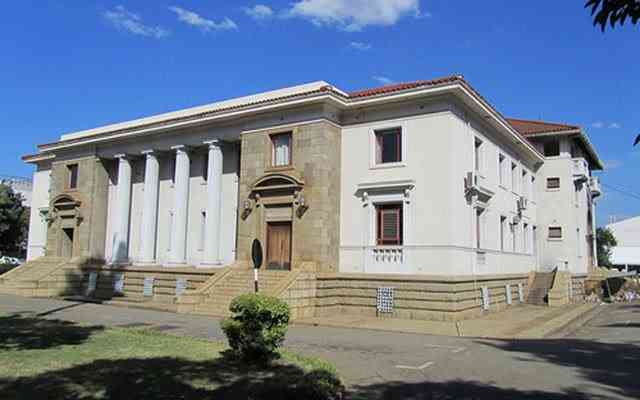RECENTLY, the Reserve Bank of Zimbabwe (RBZ) released its 2023 Monetary Policy Statement (MPS) with various policy measures it is expecting to implement and help clamp the Zimbabwean dollar depreciation and price volatility. This piece, therefore, seeks to analyse selected key policy measures proposed by the bank in its latest 2023 MPS.
Inflation projections
The RBZ projects a downward trend of inflation rate in 2023 and expects it to average 1,5% per month. A granular analysis, however, shows that in making its inflation projections the central bank through 2023 MPS has failed to price the impacts of the upcoming general elections and its associated risks.
These risks, for instance, include the pending Private Voluntary Organisation (PVO) Bill, which is awaiting presidential assent after sailing through both chambers of the National Assembly.
The PVO Bill has a high potential to constrain the civic space, which could affect non-governmental organisations (NGOs) remittances to Zimbabwe. In 2022 alone, forex inflows from NGOs were up 16,6% to constitute about 10% of US$11,6 billion received for the entire year.
As such, the foreign exchange markets risk losing a significant amount of these remittances if the Bill gets signed into law, which could exert severe Zimdollar exchange rate, social, and humanitarian impacts.
Keep Reading
- Mayhem as schools reject Zimdollar fees
- Forex demand continues to fall
- USD fees: Govt policy failure hurting parents
- RBZ blocks Harare US dollar charges
Exchange rate management
The RBZ promised to continue supporting the auction and the willing-buyer willing seller platform (WBWS) by availing forex from the surrender portion of forex receipts. While this foreign exchange market support is commendable, it is my view that the piecemeal approach to Zimbabwean dollar exchange rate liberalisation being taken by authorities is hurting the price discovery process.
The auction market should be disbanded as it is facilitating the creation of multiple exchange rates in the economy thus promoting round-tripping and rent-seeking behaviours. As such, to get a single unified official rate the central bank should only maintain the WBWS interbank market purely based on market forces of demand and supply. A market-driven exchange rate is essential in stabilising Zimdollar and eliminating distortions caused by rent-seeking.
Statutory Reserves Requirements
Generally, a lack of SRRs may create a financial imbalance in case of an untoward incident like fraud or scam, which can lead to a risk of financial instability. These SRRs are key in building trust and confidence in the banking sector as investors and the public become assured that their money is secured through reserves.
More importantly, SRRs are used for liquidity management by the central bank. A high SRR ratio means a large portion of deposits is locked in RBZ’s vaults and therefore are not available for on-lending by banks thus constraining credit creation and expansion by banks.
However, since SRRs are mostly non-interest bearing, a high SRR poses a high opportunity cost to banks, prevents full utilisation of savings, and increases the cost of financial intermediation.
Benchmark policy rate
The central bank has proposed to reduce its benchmark policy rate by 50 percentage points to 150% in line with moderating inflation pressures experienced since Q4:22. From its perspective, this stance will bring positive real interest rates in the economy, which are good as they encourage borrowing for productive purposes.
Also, the exorbitant 200% interest rate had fuelled dollarisation as shown by the increase in foreign currency loans and the relegation of Zimdollar to only a transactional currency.
However, I question the wisdom behind RBZ’s decision of decreasing the benchmark policy rate at a time the exchange rate is plummeting, particularly in the parallel market. To me, this is counterproductive as it will encourage speculative borrowing, which fuels inflation. With the Zimbabwean dollar already down by 18,2% on average in the parallel market since the start of 2023, Zimdollar prices will likely escalate months ahead.
Cognisant of this, RBZ should have maintained a tight monetary stance to manage expectations and keep exchange rate depreciation pressures suppressed.
Deposit interest rates
By adjusting the minimum deposit interest rates on both Zimdollar and US dollar savings and time deposit accounts upwards, the RBZ seeks to lure depositors to keep money aside for long-term goals while earning interest.
This ensures that excess money with the public does not end up being used for speculative purposes as it is kept in the bank account for a long time. In other words, the higher the deposit interest rate, the greater the opportunity cost of holding non-interest-bearing cash.
However, for Zimbabwe’s scenario, Zimdollar deposit interest rates of between 30-50% are insignificant as they lag behind the inflation level.
The value that will be lost due to price growth (measured at 229,8% as of end-January 2023) is higher than the value that will be gained on interest-earning deposit accounts.
As such, there is no incentive for the public and investors to maintain such accounts in a hyperinflationary environment. They would rather chase value by investing their free funds, for instance, in stocks or buying hard currency in the parallel market.
Export retention
The RBZ has increased export retention on both export proceeds and domestic foreign currency sales. This will bring great relief to exporters and domestic firms as it reduces exchange rate losses from high forex proceeds liquidation rates. So, by increasing forex retention thresholds the central bank will help reduce US dollar demand in the formal market.
With more free funds companies will be able to increase the importation of industrial raw materials, which are key in sustaining high domestic production, employment, and output. Generally, organic growth is preferred by business leaders as it is less risky.
Also, allowing tobacco farmers to be paid 85% of their deliveries in forex is a step in the right direction that would positively affect future production and improve supply in the official markets by discouraging side marketing.
If high forex retention is extended to other crops like maize and traditional grains, the rural economy that largely depends on farming will be uplifted from the grips of poverty.
Export of forex cash and gold coins
The RBZ has reviewed the export of forex cash and gold coins upwards from US$5 000 to US$10 000. Since the economy has now largely dollarised as confirmed by statistics from RBZ forex accounts balances, increasing forex export limit was inevitable to bring travel convenience.
In my opinion, the central bank’s major aim in maintaining exchange controls is to manage or prevent an adverse balance of payments (BoP) position. As such, these controls will help reduce capital flight that may emanate from speculative pressures on ZWL, protect local industry, restrict non-essential imports, build forex reserves, encourage the importation of priority goods, and manages the exchange rate.
However, exchange controls may strengthen already flourishing currency black markets as foreign currency demand may end up exceeding supply in the official market.
Gold coins
The gold coins are serving two primary functions — liquidity management (Open Market Operation) and alternative investment vehicle. Concerning the former, the fact that the gold coins are being largely sold in Zimdollars at an overvalued WBWS interbank rate means that the bank is selling at a loss.
In 2022 alone, the Zimdollar lost over 80% of its value against the US dollar in both markets. Since the turn of 2023, the Zimdollar continued on a deterioration path against the US dollar. Statistics show that it has already erased 30% of its value in alternative markets in 2023 pushing parallel market exchange premia above 40%.
As such, the selling of precious gold in fragile Zimdollar is tantamount to a waste of gold reserves at a time the nation has become too susceptible to unforeseen contingencies like disease outbreaks, droughts, and cyclones.
It is, therefore, my view that gold coins are inefficient in managing liquidity and exchange rate hence the programme of selling the coins in Zimdollar should be discontinued unless the Bank allows for full liberalisation of the WBWS system.
- Sibanda is an economic analyst and researcher.He writes in his personal capacity. — brasibanda@gmail.com or Twitter: @bravon96





